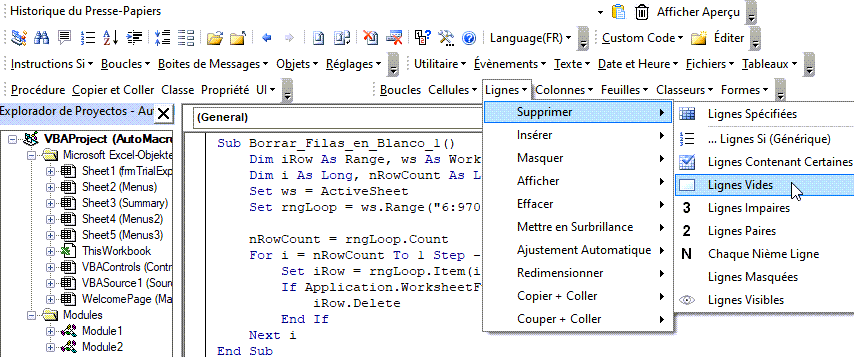VBA – Longueur / Taille des Tableaux
In this Article
Ce tutoriel vous apprendra à obtenir la longueur (taille) d’un tableau en VBA.
Obtenir la Longueur d’un Tableau
Afin d’obtenir la longueur d’un tableau, vous devez connaître les positions de début et de fin du tableau. Pour ce faire, vous pouvez utiliser les fonctions UBound et LBound de VBA.
Fonctions LBound et UBound
Cette procédure montre comment utiliser les fonctions UBound et LBound sur un tableau à une dimension :
Sub UBoundLBound()
Dim exTabl(1 To 4) As String
MsgBox UBound(exTabl)
MsgBox LBound(exTabl)
End SubEn soustrayant les deux, vous obtenez la longueur du tableau(UBound – LBound +1).
Fonction ObtenirDimTableau
Cette fonction permet de calculer la taille (longueur) d’un tableau unidimensionnel :
Public Function ObtenirDimTableau(a As Variant) As Long
If IsEmpty(a) Then
ObtenirDimTableau= 0
Else
ObtenirDimTableau = UBound(a) - LBound(a) + 1
End If
end functionObtenir la Taille d’un Tableau à Deux Dimensions
Cette fonction calcule le nombre de positions dans un tableau bidimensionnel :
Sub testDimTableau()
Dim tabl2D(1 To 4, 1 To 4) As Long
MsgBox ObtenirDimTableau2D(tabl2D)
End Sub
Public Function ObtenirDimTableau2D(a As Variant) As Long
Dim x As Long, y As Long
If IsEmpty(a) Then
ObtenirDimTableau2D= 0
Else
x = UBound(a, 1) - LBound(a, 1) + 1
y = UBound(a, 2) - LBound(a, 2) + 1
ObtenirDimTableau2D = x * y
End If
end functionVBA Coding Made Easy
Stop searching for VBA code online. Learn more about AutoMacro - A VBA Code Builder that allows beginners to code procedures from scratch with minimal coding knowledge and with many time-saving features for all users!
Learn More!



